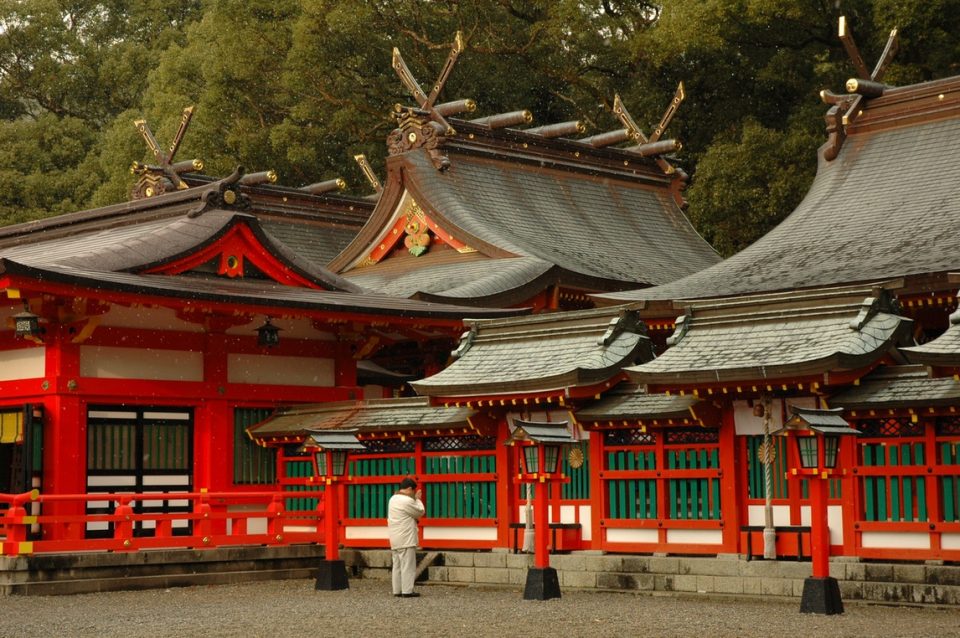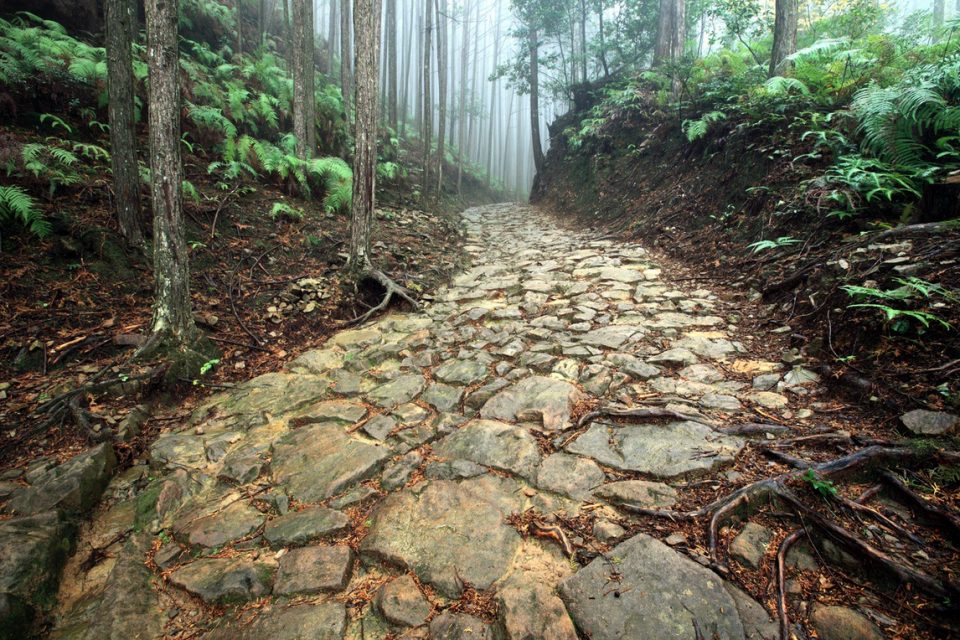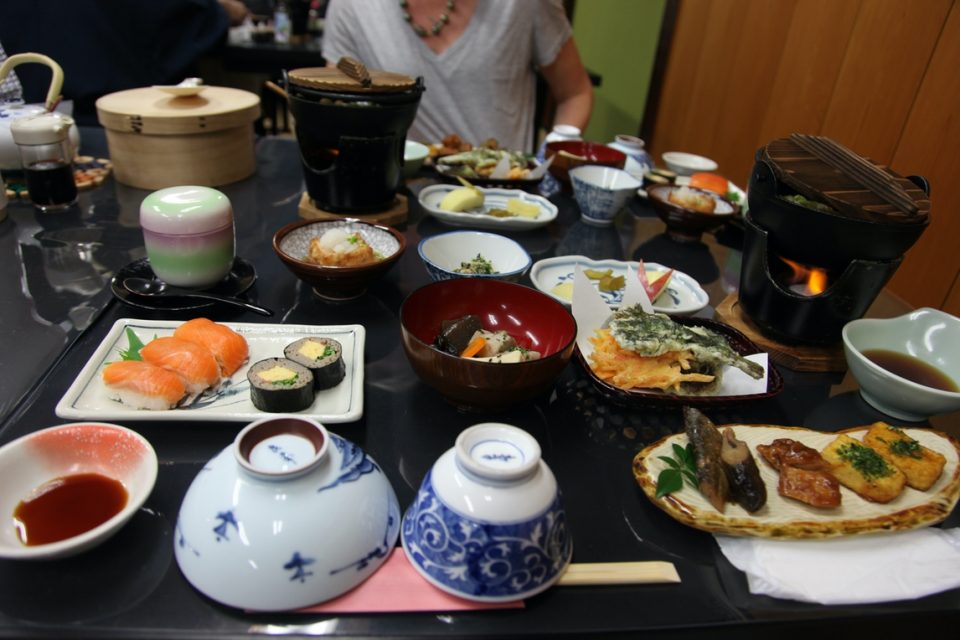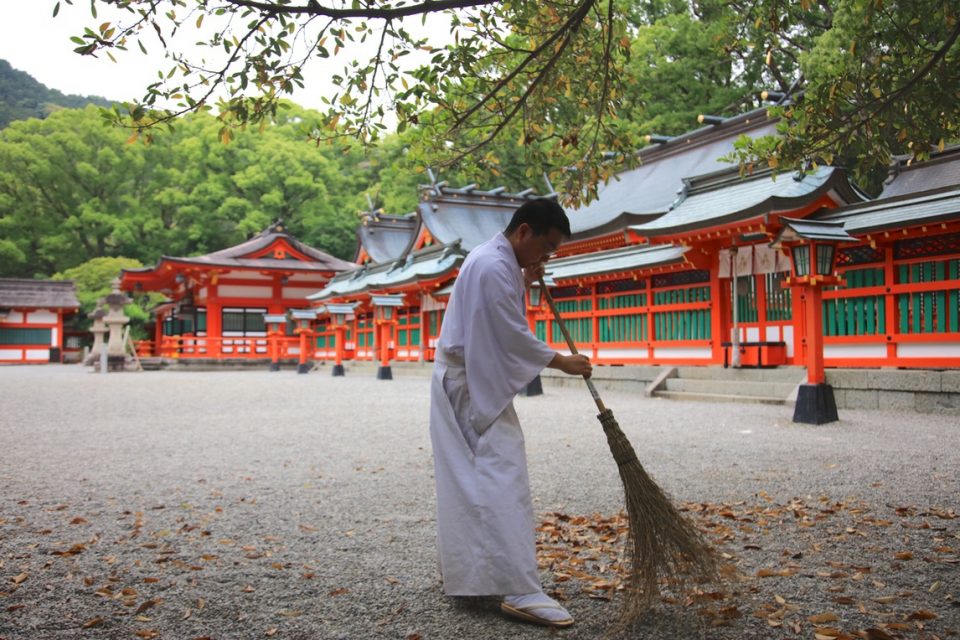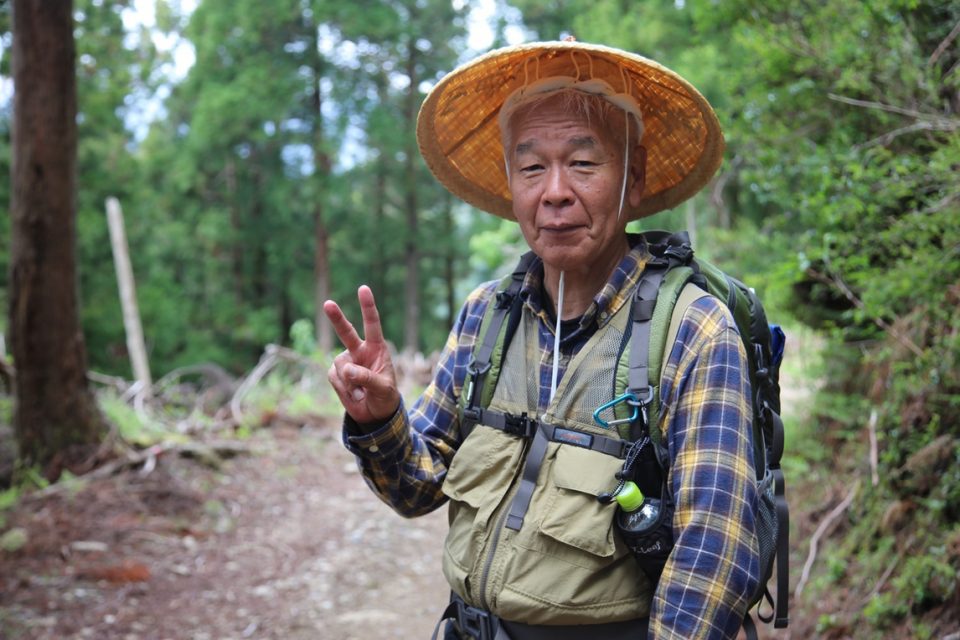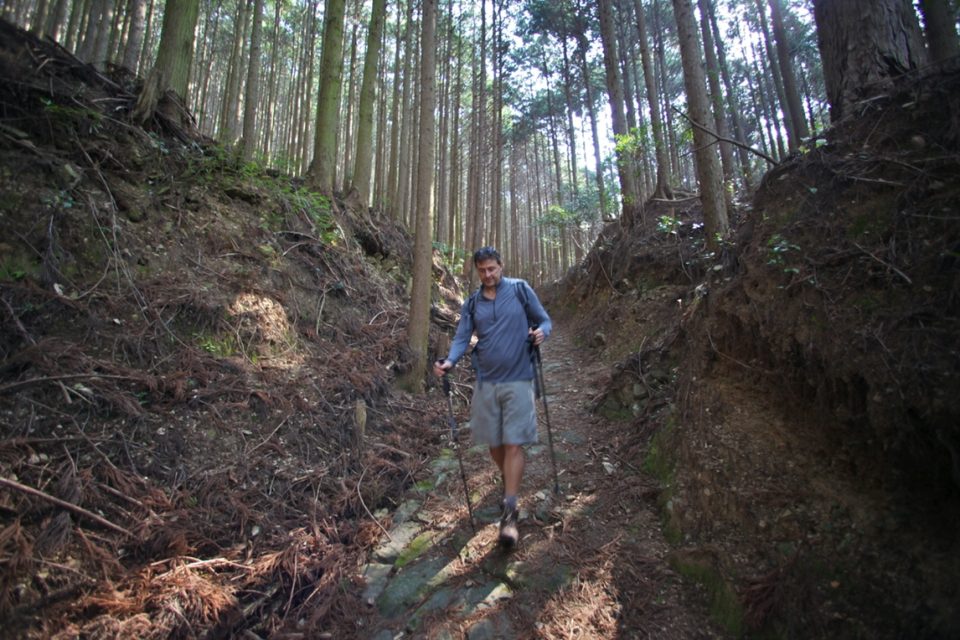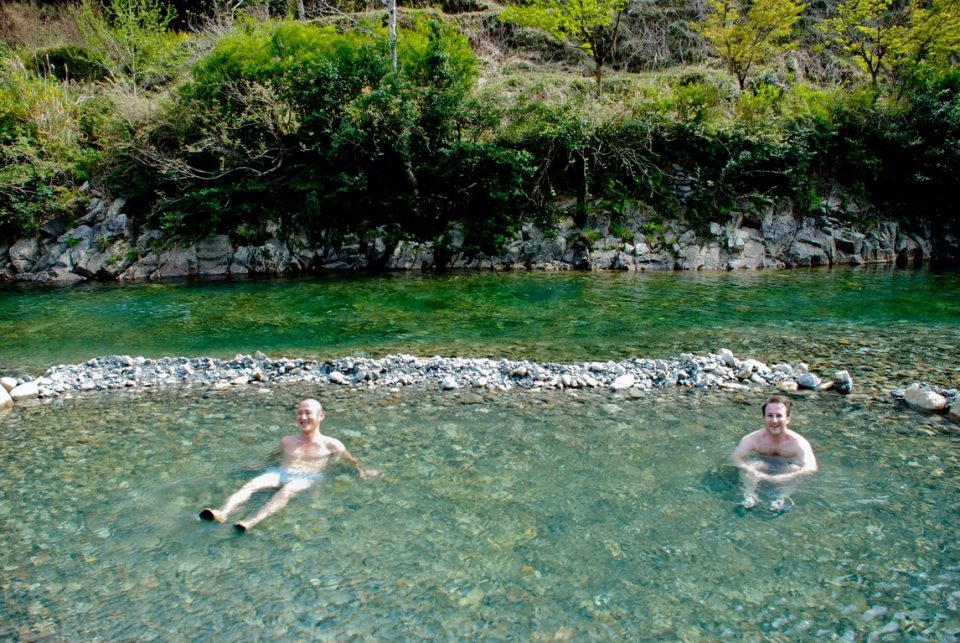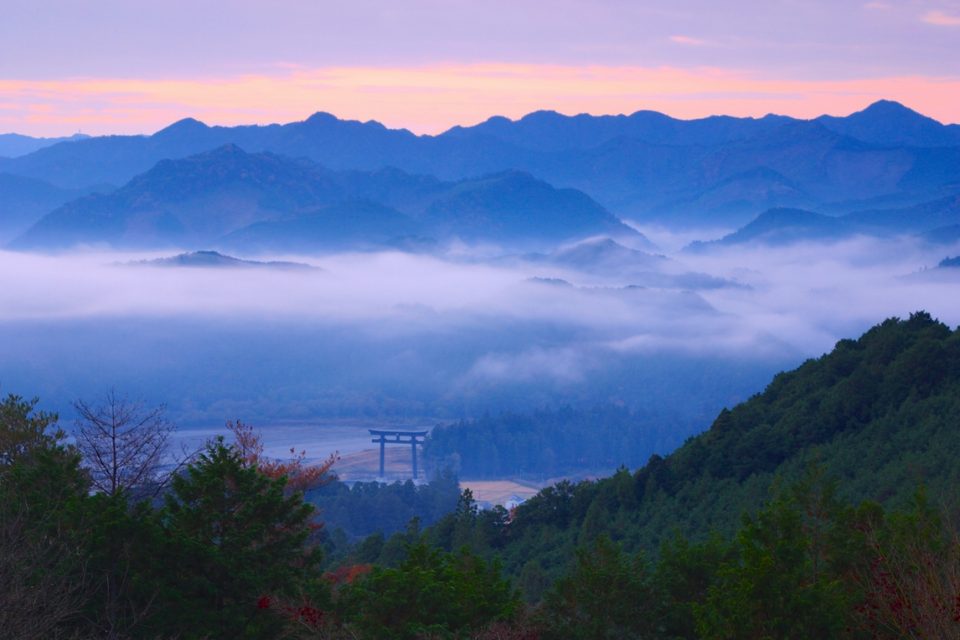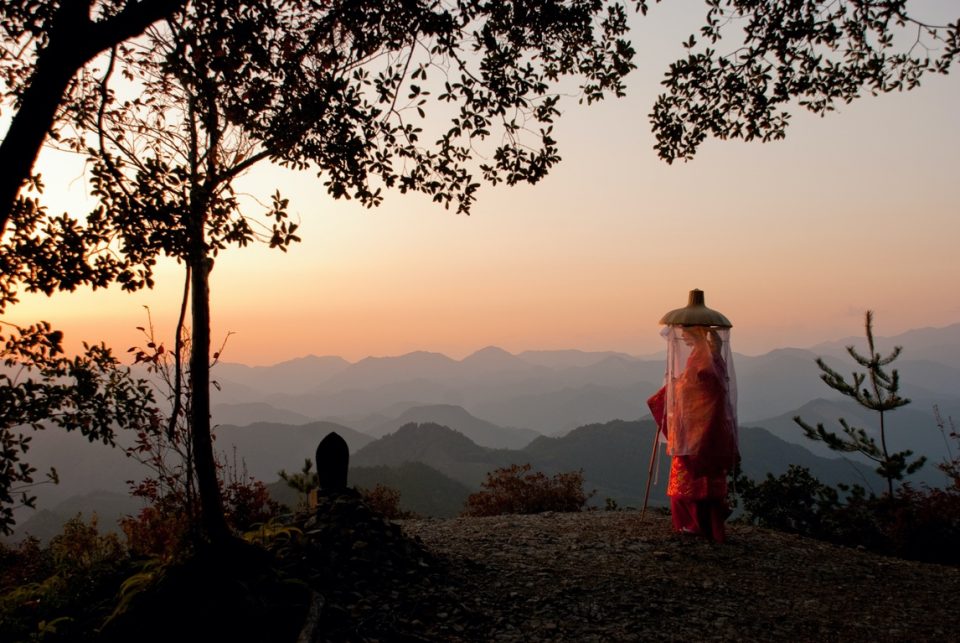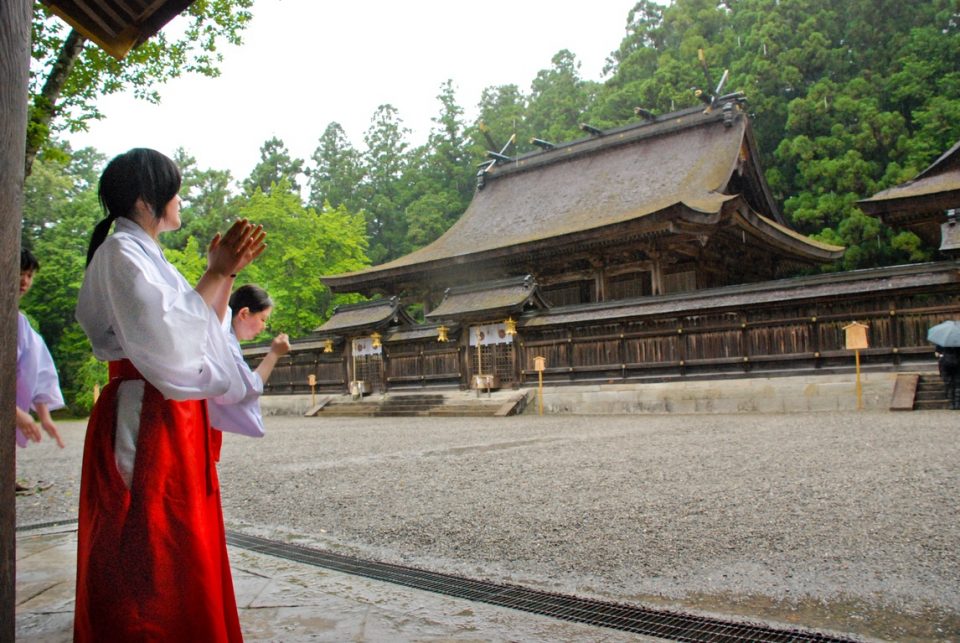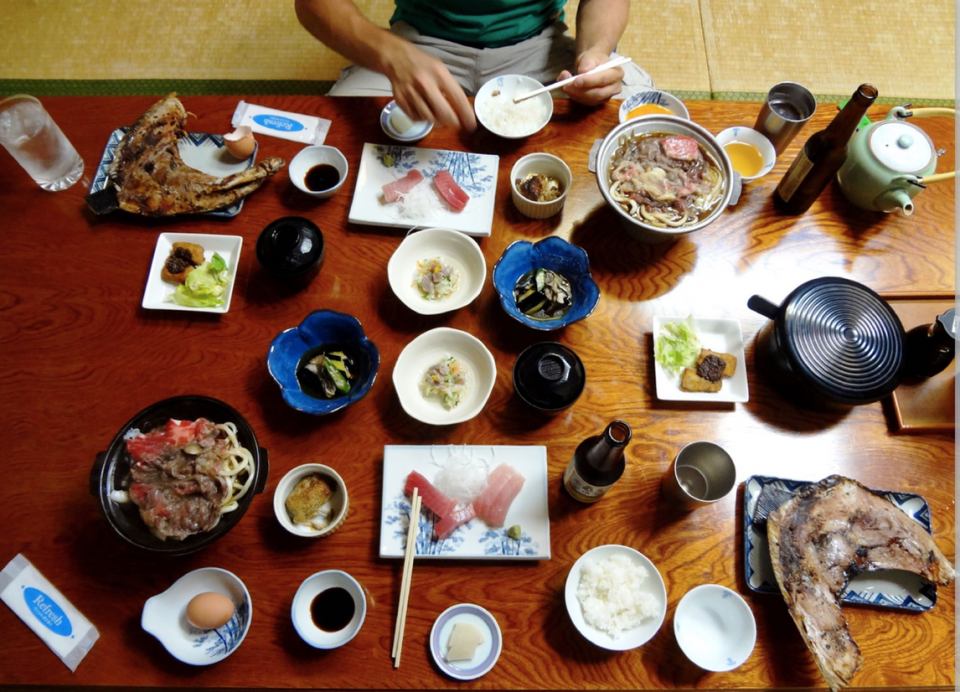length
9 Days
difficulty
Challenging - Strenuous
trip cost
from $3390 pp
Nature Immersion
Cultural Interest
REVIEWS
WHAT OUR CLIENTS SAY
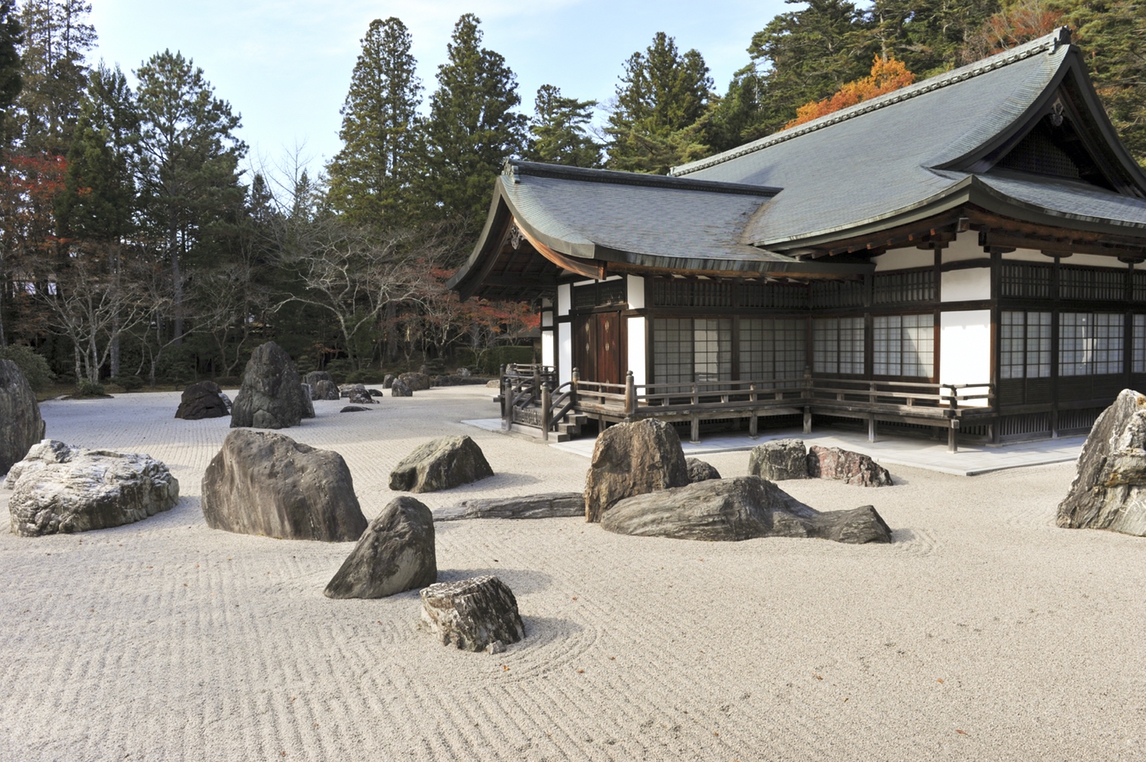
Highlights
Get Ready For
- Beautiful nature walking through rugged, forested mountains, quiet rural valleys and alongside rivers.
- Visit temples, shrines and traditional gardens
- Stay at a Japanese Buddhist temple
- Learn about traditional daily rituals, join a spiritual ceremony
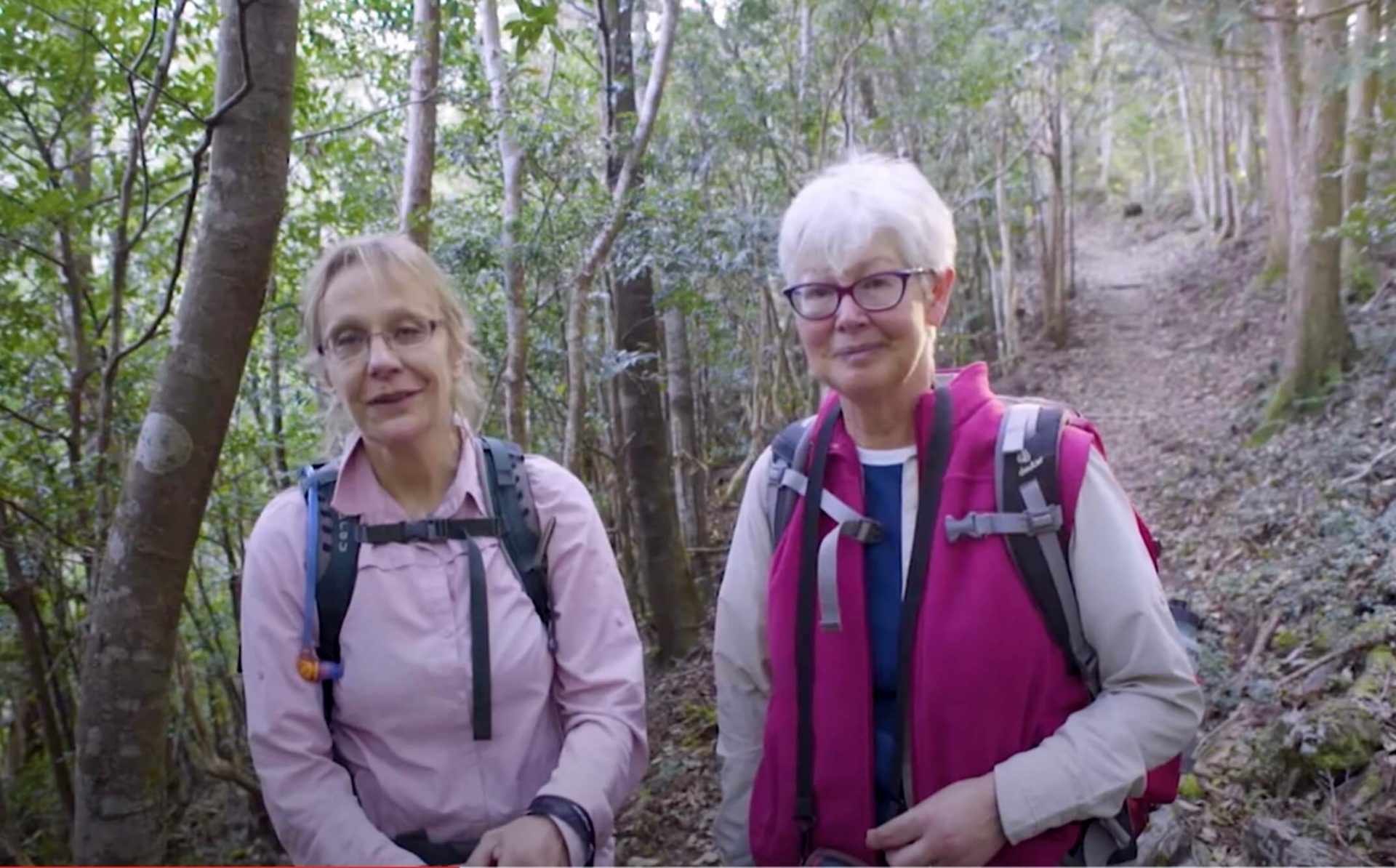
CLIENT EXPERIENCES
ON THE TRAIL
Join RAW Travellers Robyn and Jan as they walk the Kumano Kodo in Japan to find out what they’ve enjoyed the most on this iconic walking trail.
READ: ‘A Sacred Journey’, Jetstar Magazine
Journalist Jayne D’Arcy discovers her inner pilgrim along the Kumano Kodo trail.
Itinerary
Daily details
The Kumano Kodo is a popular walk and at certain times of year and guesthouses/accommodations sometimes get fully booked. This itinerary is a guide to a possible route. Details may change and the actual accommodations booked may vary from what is written here, dependent on client numbers, wishes and availability. This adjustment with accommodations may alter the exact distance walked in a day so the itinerary should be used as an indication only to overnight stops/distances.
Please note that all ascent and descent figures listed in the itinerary are approximate only and may vary slightly depending on the route taken.
Make your way by train to the temple mountain of Koyasan. This secluded town is surrounded by the eight peaks of Mt Koya and said to resemble a lotus flower. You take a funicular railway up the steep sides of Koyasan and then a short bus ride which will drop you near your temple lodging.
In Koyasan you will have a unique opportunity to stay in a Japanese Buddhist temple and be part of the daily rituals and spiritual life of Koyasan. You will have a comfortable room and be served vegetarian Buddhist cuisine, Shojin Ryori. ‘Shojin’ is a Buddhist term that refers to asceticism in pursuit of enlightenment, and ‘ryori’ means cooking. There are surprising tastes and not only is it delicious but good karma too!
Meals: D
This morning you will have a unique opportunity to take part in a Buddhist morning ceremony – the rich colours, smells of incense and rhythmical chants of the monks are enchanting. Afterwards, a walk around Koyasan with its 115 temples is a must. Be sure to visit Kongobuji, the head temple of Shingon Buddhism, the stunning vermilion Konpon Daito and Daimon, the majestic entrance gate to this mountain complex.
Perhaps the most interesting of them all is Okunoin, which has at its centre the mausoleum to Kobo Daishi, the founder of the Shingon Buddhist sect and one of Japan’s most significant religious figures. This is set in a giant cypress forest surrounded by 300,000 graves of his followers and is an awesome sight especially if you walk it at night time when the lonesome paths are lit by stone lanterns – very eerie! There are also beautiful day walks around Koyasan if you feel like stretching your legs.
Meals: B, D
After the morning ceremony and breakfast, you will have time to continue exploring the village of Koyasan or perhaps join the monks for a meditation session. You will leave Mt Koya before midday and travel by a series of short train journeys across the peninsula southwards to Kii-Tanabe. The railway line here parallels the coast and avoids the steep mountainous interior.
Kii-Tanabe is the gateway town to the Imperial Route of the Kumano Kodo and a city surrounded by the Pacific Ocean on one side and mountains on the other. The town is also home to the Tanabe Tourist Information Center – this is where you will collect your orientation pack. This evening is free for you to explore the town – enjoy great atmosphere at the Ajikoji Restaurant and Entertainment District, and perhaps stroll down to the Ogigahama Beach for sunset views.
Meals: B
It is an early morning start today and after checking out and picking up your lunch box, you will take a 40-minute bus ride to Takijiri (paid locally), start of the walk. The first section of today’s walk will be a climb up to Takahara, a rural hamlet on a ridge, noted for its ancient shrine and a spectacular view over the surrounding Hatenashi Mountain Ranges. Reminders of the past, including Buddhist statues and oji shrines, line the route along the ancient highway as you climb upwards.
Leaving Takahara behind, you head further into the mountains along the old trail, past bamboo forest and then into the pencil pine. You continue to pass by reminders of the old highway, including an ichirizuka distance marker and the sites of old former tea houses, which provided rest and shelter to pilgrims up until the early 20th century. Continuing on you crest the Hashiori-Toge pass after a short climb. The trail then descends past the Three-Fold Moon viewing area from where it is a short climb to the small but famous Gyuba-doji statue. Your descent takes you along a cobbled path and staircase to Chikatsuyu, a small village and one of the few places where you can get limited supplies or drinks.
Your final stretch of the day takes you on a climb to Tsugizakura-oji and your accommodation for the evening. Nearby is a grove of giant cedar trees, some of which are reputed to be 800 years old. If Tsugizakura accommodation is full on your chosen dates or if you are travelling with a larger group, you may stay in Chikatsuyu instead on this night.
Ascent 1260m / Descent 850m
Meals: L D
Today’s walk will bring you along many forest paths and eventually some mountain top villages before descending to Hongu. The walks starts with climbs over a number of passes and there is a permanent detour in place due to landslides on the main path. There are few facilities on the first part of today’s route which is through the forest before eventually leading you to the shrine at Hosshinmon-oji. You will continue through small settlements and get your first glimpse of the great Kumano Hongu Taisha Shrine and the giant torii gate in the valley below.
Kumano Hongu Taisha is the main shrine in the area, to which all roads in the Kumano Kodo pilgrimage lead. A long stone staircase leads to the sacred grounds of the shrine, located on a ridge and surrounded by giant cedar and cypress trees. After looking around the impressive shrine you will jump on a local bus (paid locally) to our evening destination at nearby Yunomine Onsen or Kawayu Onsen, charming little hot spring villages.
Arriving at your overnight location is a treat for tired walkers as the steam billows from the thermal rivers and there is the promise of a relaxing onsen after your exertions. The onsen thermal hot spring baths are an important part of the Kumano Kodo traditions with pilgrims performing hot water purification rituals in preparation for visiting the shrine. For us it will be more a preparation for a delicious Japanese meal in your accommodation.
Ascent 960m / Descent 1440m
Meals: B, L, D
Today you can either completely relax and take in the local onsens or perhaps return to Hongu village for further explorations. If you wish to stretch your legs a little then walk back to Hongu on the Dainichi-goe route from Yunomine Onsen – this is a steep but delightful walk, passing some remarkable old carved statues at Hanakake Jizo, overgrown by tree roots.
Hongu village is home to the Kumano Hongu Taisha, one of the Kumano Sanzan, three grand shrines of Kumano, and head shrine of over 3,000 Kumano shrines across Japan. Kumano was said to be the entrance gateway to the land of Yomi, the ‘other world’, which spirits travelled to in Japanese mythology. Across the Kumano Hongu Shrine is the Kumano Hongu Heritage Centre, featuring a diversity of exhibitions on the Kumano Kodo – all permanent exhibitions and videos include English translations. Just nearby the centre you will find Oyunohara, the largest torii shrine gate in the world at 34 meters tall, signifying the division of the secular and the spiritual worlds.
Be sure to also visit the tiny Tsuboyu onsen in a wooden cabin at the centre of town in Yunomine Onsen, which is the only UNESCO world heritage listed spa and the oldest in Japan at 1200 years old! The bath can be booked for a 30-minute private bathing and works on a first come first serve basis.
Meals: B, D
This morning you will take a short bus ride (paid locally) to Ukegawa to begin your walk. The Kogumotori-goe section is a fairly gentle trek with a climb and descent over a pass, and is mostly in the forested mountains with some nice ridge-walking sections.
The highlight of today’s walk is the Hyakken-gura pass, where a beautifully positioned Buddhist statue on a hilltop has a backdrop of the most spectacular views of the trip. The impressive Hyakken-gura look out surprises walkers with a lovely panoramic view of the 3600 peaks of Kumano. Take a moment to enjoy this stunning view, as pilgrims have been doing for over 1000 years.
The trail continues to rise and fall, sometimes gradual and the off time steeper when you continue towards the Sakura-jaya teahouse remains. The views from the Sakura-jaya teahouse remains down to the valley and across the mountains are impressive. It is said that when the owners of teahouses saw pilgrims approaching from far off in the distance, they would start to cook mochi rice cakes and boil water for tea, to have things ready to serve just as the pilgrims would arrive at the teahouse. From here the trail continues on a forest track and eventually descends into Koguchi, a small and isolated village surrounded by mountains and rivers.
Ascent 670m / Descent 690m
Meals: B, L, D
The Ogumotori-goe is the second day of a 2-day trek from the Hongu area to Kumano Nachi Taisha. It is one of the toughest sections of the Nakahechi trail and a big day’s walk so we recommend an early start as you begin with a 2.5-hour uphill climb up the Dogiri-zaka slope. Dogiri-zaka can be directly translated as “Body Breaking Slope”, and is an appropriate name for this 5km uphill section that rises 800m to the Echizen-toge Pass.
Afterwards you pass the Jizo-jaya teahouse remains to the Moja-no-Deai, ‘Abode of the Dead’. It is believed that the souls of the dead gravitate to these higher mountains, where spirits inhabit this section of the trail. The walk continues through forest and along ridges, the path ascending and descending, until at Funami Toge pass the Pacific Ocean spreads out before you.
From here the trail descends to the Nachisan sanctuary and the brightly colored Kumano Nachi Taisha shrine, another of the three grand shrines of Kumano. Also nearby is the wonderful wooden Seiganto-ji temple and the spectacular Nachi-no-Otaki waterfall, which is the highest in Japan and can be seen from far out on the Pacific Ocean. Tonight you will either overnight in Nachisan near the Kumano Nachi shrine or Kii Katsuura, a small fishing village approximately 20 minute bus ride from Nachisan. Relax and enjoy the completion of your extraordinary Kumano Kodo walk!
Ascent 1260m / Descent 930m
Meals: B, L, D
Today enjoy a leisurely breakfast and then transfer by train to your onwards destination. Train tickets are not included and can be purchased locally at the Kii-Katsuura train station.
Meals: B
Map
Explore
Koyasan
The secluded mountain town of Koyasan is surrounded by the eight peaks of Mt Koya and said to resemble a lotus flower. There are 115 temples, including Kongobuji, the head temple of Shingon Buddhism, the stunning vermilion Konpon Daito and Daimon, the majestic entrance gate to this mountain complex. Okunoin has at its centre the mausoleum to Kobo Daishi, the founder of the Shingon Buddhist sect and one of Japan’s most significant religious figures.
CLICK ON A PIN TO REVEAL INFORMATION ABOUT THAT LOCATION
Kii-Tanabe
Kii-Tanabe is the gateway town to the Nakahechi (‘Imperial Route’) of the Kumano Kodo. It is surrounded by the Pacific Ocean on one side and mountains on the other. From here, it’s a 40-minute bus ride to the trailhead at Takijiri-oji.
CLICK ON A PIN TO REVEAL INFORMATION ABOUT THAT LOCATION
Takijiri
Takijiri is the traditional starting point of the Kumano Kodo walk and where you will find the Kumano Kodo Kan Pilgrimage Centre. The trailhead is behind the Takijiri-oji, which is considered to be where the passage into the precincts of the sacred mountains begins.
Chikatsuyu
The small village of Chikatsuyu sits at the base of the mountain trail at the Hidaka-gawa River. Inns and a couple small restaurants run along the main road, which runs east and west. The area features an ancient weeping cherry blossom tree, an ancient graveyard for warriors, a local experience centre and Chikatsuyu-oji.
Tsugizakura-oji
At the impressive Tsugizakura-oji shrine there are giant Nonaka-no-Ipposugi cedar trees. Some have a circumference of 8m and are believed to be up to 800 years old. This shrine, along with its trees, was scheduled to be demolished in 1906 as part of the government’s shrine consolidation program. It was saved by Minakata Kumagusu, an eccentric genius researcher and avant-garde environmentalist.
Hosshinmon-oji
Hosshinmon-oji is one of the most important sites on the Kumano Kodo pilgrimage route. It marks the outermost entrance into the divine precincts of the Kumano Hongu Taisha.
Kumano Hongu Taisha
Kumano Hongu Taisha is one of the three grand shines of Kumano and the head shrine of over 3000 Kumano shrines across Japan. A long stone staircase leads to the sacred grounds of the shrine, located on a ridge and surrounded by giant cedar and cypress trees. On the riverbank is Oyunohara, the original shrine ground of Kumano Hongu Taisha, marked by an immense Torii gateway – the biggest in Japan!
Yunomine Onsen
Yunomine is a quaint little collection of inns tucked into a small valley deep in the heart of the sacred mountains of Kumano. It was discovered about 1,800 years ago, and it is thought to be one of the oldest hot springs in Japan. The onsen culture in Japan is very rich, but the strong connection with spiritual culture found in Yunomine is unprecedented.
Kawayu Onsen
On the north side of this hot spring town is a diverse collection of places to stay. On the south side of the river is a green forested mountainside. The defining feature of Kawayu Onsen is the Oto river. In the evening, enjoy a soak while watching the warm mist from the river rise slowly into the clean mountain air.
Hyakken-gura pass
At the Hyakken-gura pass there is a beautifully positioned Buddhist statue on a hilltop with a backdrop of the most spectacular vista of the trip! The impressive lookout surprises walkers with a lovely panoramic view of the 3600 peaks of Kumano.
Koguchi
The small mountain village of Koguchi is nestled along the Akagi-gawa River almost directly in-between Hongu and Nachi. It is refreshing to put your feet in the river after a hot day’s hike.
Nachisan
Nachisan is where you’ll find the brightly coloured Kumano Nachi Taisha shrine, the wonderful wooden Seiganto-ji temple and the spectacular Nachi-no-Otaki waterfall, which is the highest in Japan and can be seen from far out on the Pacific Ocean. The extra section of trail between Nachisan and Daimon-zaka is an impressive cobblestone staircase lined with centuries-old trees.
Kii-Katsura
Kii-Katsura is located on the southeast coast of the Kii Peninsula. It is in essence a fishing port turned hot spring resort. The most dominant landmark in Katsuura is the Hotel Urashima. It has the feel of an Onsen Disneyland or James Bond-like fortress and is located on an island-like peninsula in Katsuura Bay.
Inclusions
What's included?
- 2 nights in a Buddhist monastery in Koyasan (twin share, shared bathroom)
- 1 night in Kii-Tanabe (twin share, shared bathroom)
- 5 nights in traditional Japanese guesthouses (twin share, shared bathroom)
- Daily meals included as listed in the itinerary
- Orientation pack collected on arrival in Kii-Tanabe
- Luggage transfers on the Kumano Kodo on all trekking days
- Bus ticket from Koyasan to Kii-Tanabe*
- RAW Travel’s exclusive interactive navigation app
- RAW Travel luggage tag & buff
- Carbon offset for your trip and a native tree planted for every walker
*Important The Koyasan to Kumano Kodo access bus doesn’t operate from 1 December to 31 March. Please discuss the alternative option with your destination expert.
- Local bus tickets (except Koyasan to Kii-Tanabe)
- Train tickets
- Flights to/from destination
- Travel insurance
- Single supplement
- Beverages other than water at meals
- Expenses and items of a personal nature
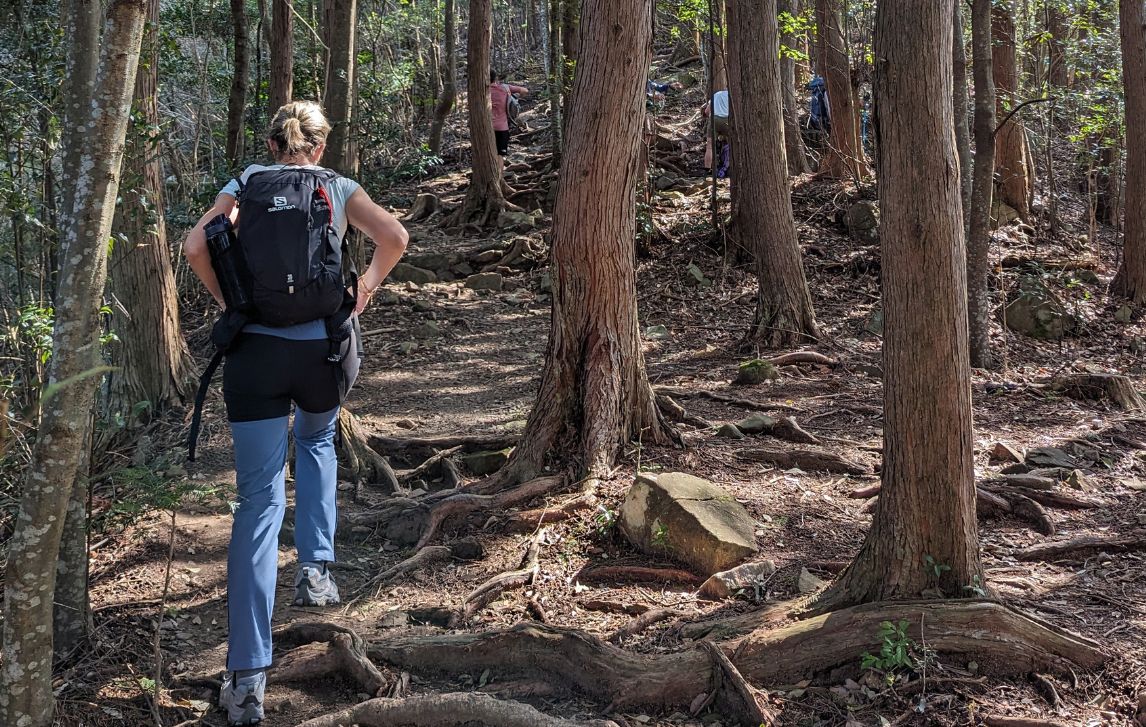
On the trail
What it's like underfoot
The Kumano Kodo trek is set mostly in the deep forest, with a number of steep ascents and descents along the trail. Distances can be deceptive on the Kumano Kodo. Although the route does not go to great heights like some mountain walks, it is easy to underestimate the difficulty and effort required. The Kii-Peninsula is an exceptionally mountainous region. Paths vary from beautiful stone flagged sections to gnarly tree-root covered sections of bare earth. It can easily take 7 or 8 hours to walk as little as 14km a day (with breaks), especially if it has been raining and the path is slippery.
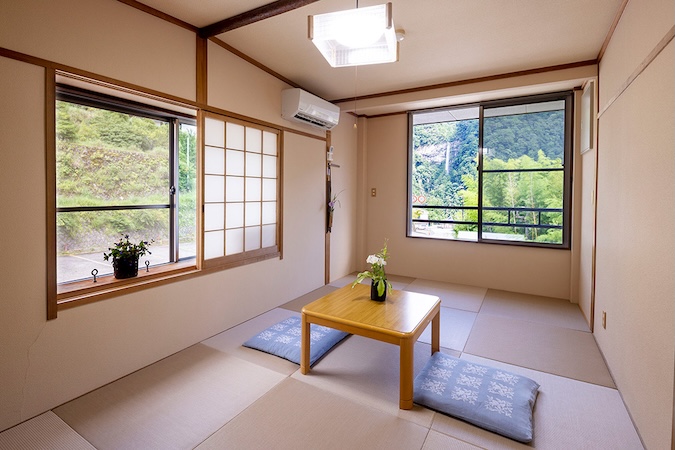
Accommodation
Where you'll stay
Most accommodations along the Kumano Kodo trail are ryokans and minshukus that offer a great chance to meet local people and enjoy a truly authentic Japanese experience. Staying in traditional style accommodations will be without a doubt one of the highlights of your Kumano Kodo experience. Ryokans and minshukus are basic in style with mostly shared toilet and bathroom facilities. They have great character and friendly hosts. They typically feature tatami mat flooring, have shoji sliding doors, futon bedding and multi-course kaiseki meals. Yukata robes are also provided for your stay. You can read more about staying in a ryokan here.
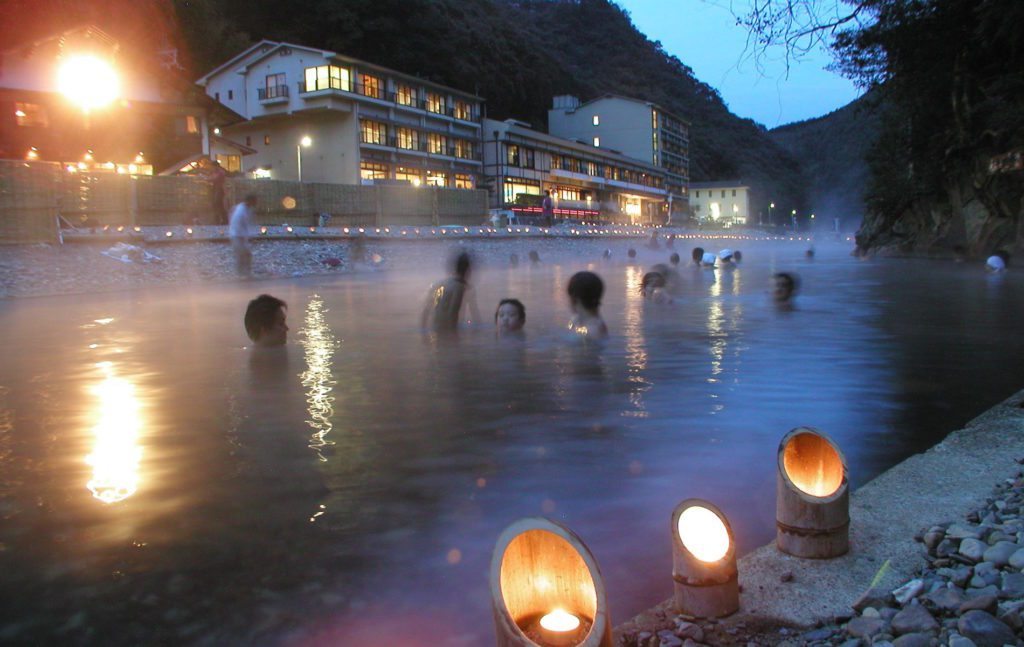
The onsen experience
Japanese bathing
Onsens along the Kumano Kodo are a highlight of the pilgrimage experience, offering hikers a chance to relax and rejuvenate after a day on the trail.These natural hot spring baths offer a peaceful retreat, with mineral-rich waters believed to promote healing and rejuvenation. Whether soaking in riverside baths, open-air pools surrounded by nature, or baths with scenic ocean views, each onsen provides a unique atmosphere to unwind. The soothing heat eases tired muscles, while the tranquil surroundings help refresh both body and mind. It’s the perfect way to relax and recharge before continuing your journey along this historic trail. Read our Ultimate Guide to Japanese Onsens.
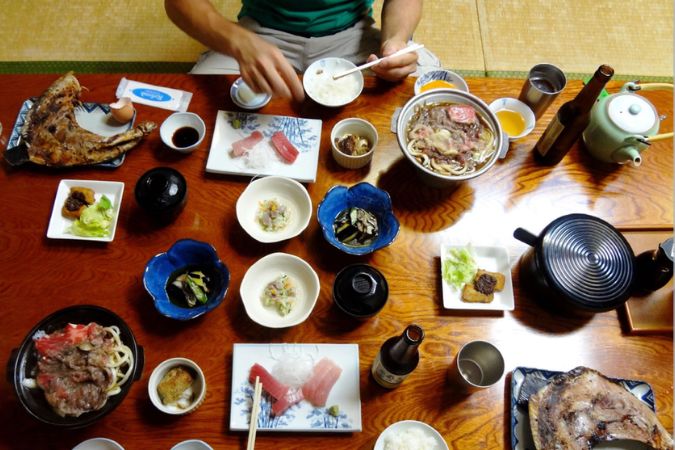
Food
The art of Japanese Cuisine
The food is an incredible highlight of walking the Kumano Kodo! Japanese food is refined, elegant, pure and delicate: fresh sashimi and cooked fish, tempura, miso, rice (of course), pickled vegetables, delicious hotpots, soups and the alkalising umeboshi plum. Breakfast mostly includes a Japanese-style spread with rice, miso soup, grilled fish, tamagoyaki (rolled omelet), pickles and sometimes natto (fermented soybeans). For lunch you can expect delicious Bento boxes with rice, fish, pickles, and vegetables, while dinner is a multi-course kaiseki feast usually including sashimi, tempura, simmered dishes and regional specialties like Kumano beef or wild mountain vegetables.

Navigation
Finding your way
Finding your way along the Kumano Kodo has become a lot easier with our exclusive APP, which has all your trip information and route guidance in one handy place. You still need to be self-reliant with wayfinding. For the best results, use a combination of road and trail signs and our app. Knowing the daily distances, elevation changes and notable landmarks will enhance your navigation. Our app can pinpoint and confirm whether you’re still on the correct trail. Like with any phone app, it’s not intended to be used constantly as you walk. Read more about all the great features of the app and how to use it for navigation.
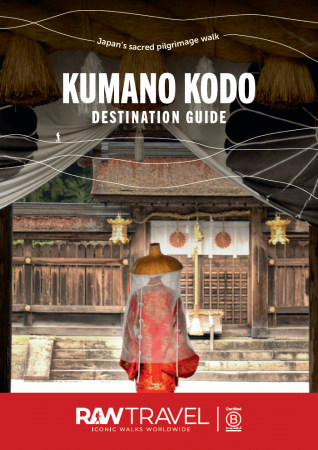
Exclusive Guide
GET INSPIRED
Japan’s ancient Kumano Kodo trails are nestled in the verdant mountains of the southern part of the beautiful Kii Peninsula, just south of Osaka. This lush and rugged area has been considered the abode of the gods and worshipped for centuries.
Our destination guide is bursting with all you need to know about walking the sacred Nakahechi pilgrimage route, the most popular and accessible of all the routes. You’ll love the peacefulness and tranquillity of the trail, the food (so elegant and refined!), the onsens (a cherished Japanese ritual), and the traditional family run guesthouses, full of character and charm.
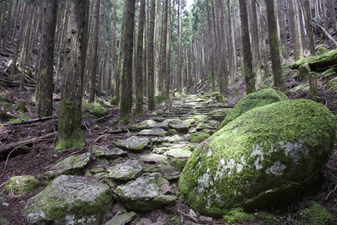
Japan Walking Tours
The 7 Day Trail – Kumano Kodo
- Walk the full length of the Nakahechi trail
- Stay in traditional guesthouses
- Gain insights into life in rural Japan and the spiritual history
- Enjoy delicious handmade Japanese food with fresh local ingredients
$2,595.00
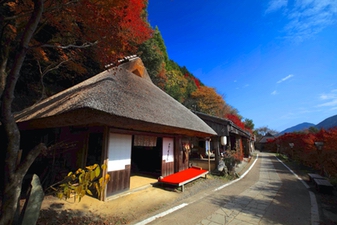
Japan Walking Tours
The Autumn Trip – Kumano Kodo
- Stay in traditional guesthouses
- Beautiful, changing colours are a highlight for people on this trek
- Enjoy delicious handmade Japanese food with fresh local ingredients
- A great option for solo travellers or enjoy the company and support of others
$2,895.00
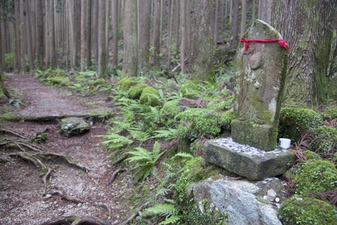
Japan Walking Tours
The Extended Trip – Kumano Kodo
- Hike the full length of the Nakahechi route
- Enjoy a day on the challenging Kohechi route
- Journey along the Kumano-gawa river in a traditional boat
- Experience the life of a monk by staying in a Buddhist monastery
$3,950.00
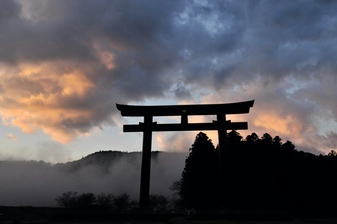
Japan Walking Tours
The Highlights Trip – Kumano Kodo
- Stay in traditional minshuku and ryokans
- Enjoy a traditional boat ride on the Kumano-gawa river
- Savour delicious Japanese cuisine
- Visit all 3 Kumano Sanzan grand shrines
$2,350.00
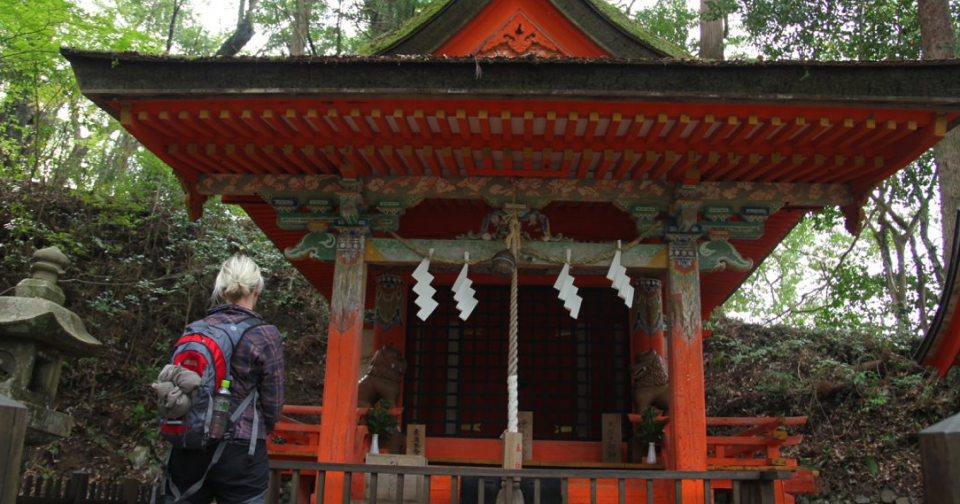
Japan Walking Tours
Nakahechi & Kohechi trip – Kumano Kodo
- Challenging hike through the rugged forested mountains
- Walk the full length of both the Nakahechi and Kohechi routes
- Journey along the Kumano-gawa river in a traditional boat
- Stay in a Buddhist monastery in Koyasan
$4,850.00
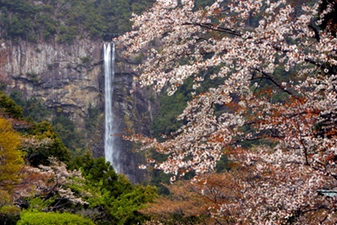
Japan Walking Tours
The Spring Trip – Kumano Kodo
- A great option for solo travellers
- Stay in traditional guesthouses
- Spring is a wonderful time to hike the Nakahechi Trail
- Enjoy delicious handmade Japanese food with fresh local ingredients
$3,195.00
TRIP date selection
when would you like to travel?
Please select your preferred dates for on-demand trips or select a scheduled date for group departures. If you have booked a self-guided trip please understand that because your trip date is on demand and we must check availability of all properties on your chosen dates before it can be fully confirmed

